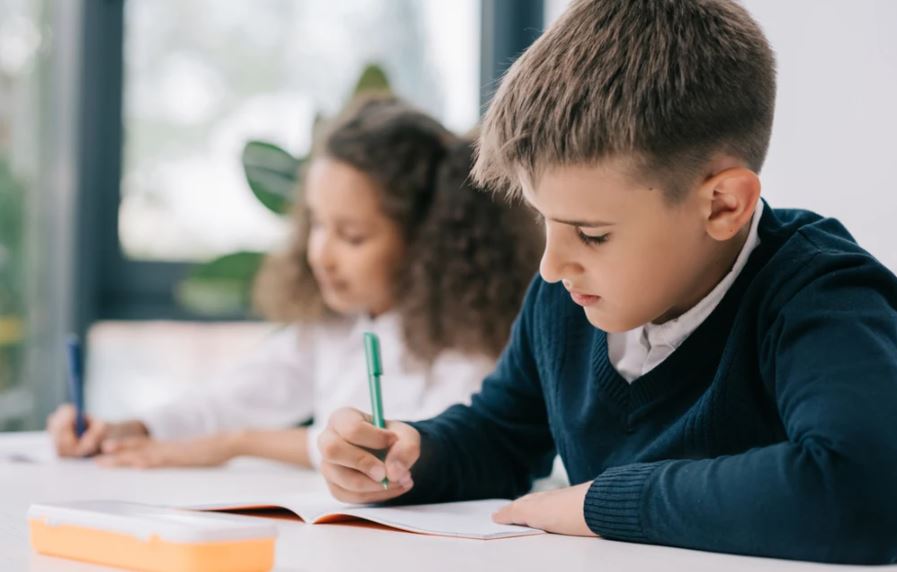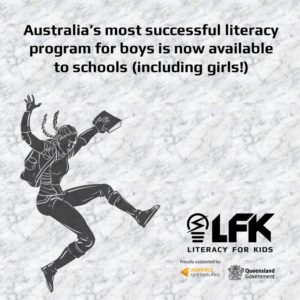7 Tips to Prepare your Students for Test-Taking Success

As test prep season starts to creep up for the end of the semester, there can be an undercurrent of anxiety, overwhelm, and stress – both from teachers and students. But with preparation and tools in their toolbox, our learners can become more confident, calm, and ready for upcoming assessment tasks. In order to get your students prepared, I’m sharing 7 test-taking tips to use in your classroom and at home, during test prep season.
With each tip that I provide, it can easily be implemented in your already established literacy routine and instruction. Keep in mind that these test-taking tips might be ideas and activities you’ve already used throughout the year, but are specifically targeted for success on the test. Additionally, each tip has positive benefits for every student in your classroom. These tips are parent-friendly too!
1. Dissecting the Title
The purpose here is to analyse the title in detail. Start at the top. Read the title twice and ask: What words stand out? What connections can you make? Why do you think the word might be there? The goal is to think about keywords, background knowledge and what you think the passage might be about, prior to reading the passage. We want to stretch their brain muscles ahead of reading the text.
Here’s an example of a comprehension text title: The Early Life of a Famous Radiographer
a) The word ‘life’ gives you a clue that it could be a biography, the word ‘early’ – could be focussing on their life before they became famous. The word ‘famous’ has synonyms such as well-known, celebrated, notable, respected. ‘Radiograph‘ derived from roots: ‘radio‘ used as a prefix is from the Latin word radius, meaning a ray) and ”-graphy‘ meaning writing or recording something. We want our students to dissect the title by analysing these words.
2. PIE: Persuade Inform Entertain (Author’s Purpose)
We want our students to identify the purpose for writing the passage. Did the author want to persuade them to think a certain way, after reading the passage? Did the author to inform them about a topics or idea? Did the author write for enjoyment and want to entertain them? When the students are firm on ‘why’ the author wrote the text, they can decide on and circle either P, I or E. This is helpful because often comprehension passages will include an author’s purpose question. All of the comprehension tasks in our literacy programs feature this exact question category.
3. Numbering Paragraphs & Finding the Main Idea
You might like to try this technique: before the students read the passage in depth, ask them to number the paragraphs. After reading a paragraph, ask them to write a few short words about the main idea. Numbering each paragraph supports their claim. If they need to check what they’ve written, they simply jump to that numbered paragraph rather than reading the whole passage. This also helps with summary questions – so many students find this to be tricky – but if they’ve jotted down main ideas, this will help to form a summary (and also assists with sequencing).
4. Show Proof for your Answers within the Text

This will break kids out of the habit of rushing to form an answer and saying, “Finished!” and that’s it. We need to encourage our students to show proof and how they got to that conclusion. Doing this practice verifies that the best answer choice is being selected based on the text that they’ve read.
Methods for showing proof include highlighting, underlining, circling and, taking it a step further, mentioning the paragraph number where the information is found. This is super helpful for teachers and parents because you can flip to the passage paragraph – especially if their answer is incorrect. You can work on addressing the student’s misconception, correct it and clarify their understanding.
5. The Importance of Visuals
Images are powerful! Anytime there is a photo/image/graph/visual it is there for a reason. This is a warning sign for students: this is important. We want our students to pause and ask “Why is this image here?” “What is it here to teach me?” “Why did the author include this image/photograph/diagram/timeline?”
This practice helps with answering author’s purpose. Don’t skip over it without doing some thinking around the image.
6. Elimination Strategies
This is my favourite strategy! I like this technique because it empowers our students and helps them feel in control when reading.
I like to forewarn my students about a comprehension assessment by saying, “The test writer is out to trick us but we don’t have to be fooled. One way that we can be one step ahead is to properly remove any fake answer choices immediately. But wait! Don’t just cross out anything just because.” We want our learners to think about why they are crossing out that answer choice. Once kids find out what is wrong with that answer, it is a great feeling of empowerment to cross it out. Emphasising this strategy makes it easier for students to arrive at the best answer. Choosing between two answers is a lot easier than choosing from four answers.
6. Tricky Words
When kids come across a tricky word in a text, there are several strategies they can use to figure it out. Here are some common techniques:
a) Context clues: Learners can look for clues in the surrounding words to help them understand the meaning of the tricky word. Aim to make connections with other familiar words or phrases nearby.
b) Phonics: If the word is unfamiliar, they can try to sound it would by breaking it down into individual sounds or syllables.
c) Word parts: Children can look for prefixes, suffixes or root words within a tricky word. This can provide clues to the meaning or pronunciation of the word.
d) Picture or context support: In some cases, the text may be accompanied by pictures or illustrations that provide visual clues.
I hope that these 7 strategies are leaving you excited about assessment preparations with your learners. We want our kids to feel comfortable with reading passages and answering questions when they know they have a toolbox of strategies that will help them.
Our programs ~ Literacy for Boys and Literacy for Kids ~ have had a huge uptake with schools and homeschoolers this year. It reflects two things:
a) the need for quality reading material that engages students
b) a decline in reading skills over the past three years (COVID’s impact largely)
We are incredibly passionate about improving kids’ literacy – research consistently supports the fact that confident readers achieve more highly than disengaged learners.
If we can get our children to enjoy reading they will grow into a reader, and that reader has more doors open to them in this world.
If you are wanting a resource that can boost your child’s or class’ literacy in 2023, please visit Literacy for Boys or Literacy for Kids
Check out our recent appearance on Channel 7 News ~
Parents ~ sign up for a free 30-day trial and improve your son’s literacy for the upcoming school year!
As an educator, do you want more from your literacy program? Contact us for a 30-day free trial in your school or classroom. Sign up for our newsletter and get FREE Comprehension Worksheets for Years 3 to 9.
Check out our blogs for more ideas and tips.
Using Technology to include all literacy learners
Steps to Successfully Support Disengaged Learners
See us featured in The Educator Australia magazine
Research confirms that early reading boosts literacy
Boys Love LFB – Here’s what they have to say!
Get boys reading in the digital age
Why write? Tips for reluctant writers
Brought to you by Tanya Grambower

